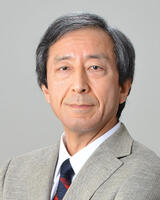Research Experience
-
2021.04-Now
早稲田大学 大学院情報生産システム研究科 教授
-
2009.04-2021.03
筑波大学 先端学際領域研究センター および 大学院システム情報工学研究科 教授
-
2014.04-2018.03
National Institute of Informatics Guest Professor
-
2013.04-2018.03
理化学研究所 客員研究員
-
2008.04-2009.03
NTT Communication Science Laboratories, Atsugi, Japan. Senior Research Scientist, Supervisor
-
2008.12-2009.02
University Erlangen-Nuremberg, Germany. Guest Professor
-
2004.04-2008.03
Hokkaido University, Sapporo, Japan. Guest Professor
-
2003.04-2008.03
the NTT Communication Science Laboratories, Atsugi, Japan. Media Information Laboratory Executive Manager
-
2006.04-2007.03
The University of Tokyo The Graduate School of Information Science and Technology
-
2000.04-2003.03
the NTT Communication Science Laboratories, Kyoto, Japan. Group Leader at the Speech Open Laboratory Senior Research Scientist, Supervisor
-
1999.01-2000.03
the NTT Lifestyle and Environmental Technology Laboratories, Atsugi, Japan. r, Group Leader at the Multimedia Electronics Laboratory Senior Research Engineer, Superviso
-
1996.07-1998.12
the NTT Multi-Media System Laboratory Group, Yokosuka, Japan. Strategic Planning Senior Research Engineer, Supervisor
-
1987.08-1996.06
the NTT Human Interface Laboratories, Musashino, Japan. Speech and Acoustics Laboratory Senior Research Engineer, Supervisor
-
1981.04-1987.07
NTT Electrical Communication Laboratory, Yokosuka, Japan. Research Engineer


Click to view the Scopus page. The data was downloaded from Scopus API in January 09, 2026, via http://api.elsevier.com and http://www.scopus.com .